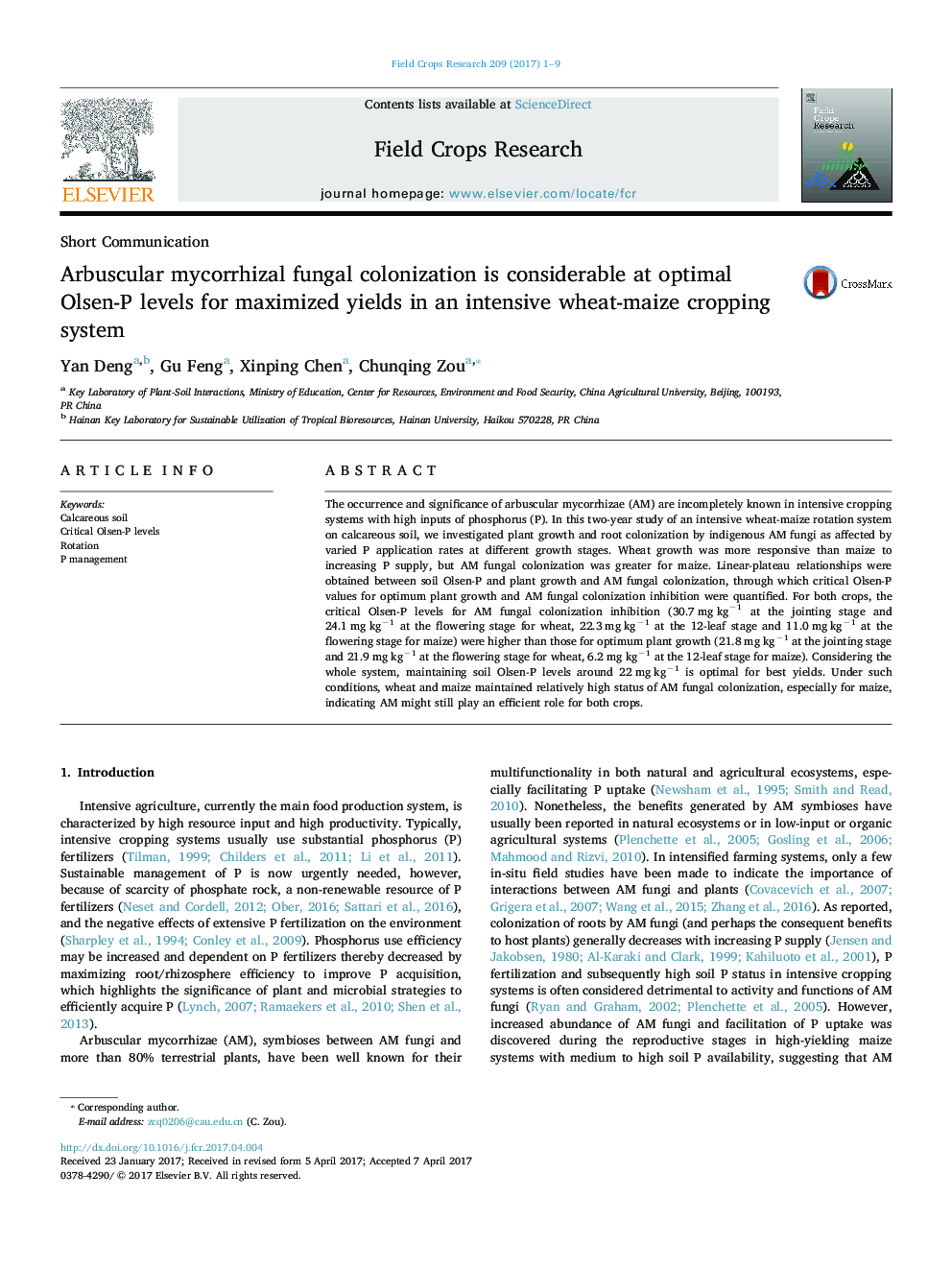| Article ID | Journal | Published Year | Pages | File Type |
|---|---|---|---|---|
| 5761517 | Field Crops Research | 2017 | 9 Pages |
Abstract
The occurrence and significance of arbuscular mycorrhizae (AM) are incompletely known in intensive cropping systems with high inputs of phosphorus (P). In this two-year study of an intensive wheat-maize rotation system on calcareous soil, we investigated plant growth and root colonization by indigenous AM fungi as affected by varied P application rates at different growth stages. Wheat growth was more responsive than maize to increasing P supply, but AM fungal colonization was greater for maize. Linear-plateau relationships were obtained between soil Olsen-P and plant growth and AM fungal colonization, through which critical Olsen-P values for optimum plant growth and AM fungal colonization inhibition were quantified. For both crops, the critical Olsen-P levels for AM fungal colonization inhibition (30.7 mg kgâ1 at the jointing stage and 24.1 mg kgâ1 at the flowering stage for wheat, 22.3 mg kgâ1 at the 12-leaf stage and 11.0 mg kgâ1 at the flowering stage for maize) were higher than those for optimum plant growth (21.8 mg kgâ1 at the jointing stage and 21.9 mg kgâ1 at the flowering stage for wheat, 6.2 mg kgâ1 at the 12-leaf stage for maize). Considering the whole system, maintaining soil Olsen-P levels around 22 mg kgâ1 is optimal for best yields. Under such conditions, wheat and maize maintained relatively high status of AM fungal colonization, especially for maize, indicating AM might still play an efficient role for both crops.
Keywords
Related Topics
Life Sciences
Agricultural and Biological Sciences
Agronomy and Crop Science
Authors
Yan Deng, Gu Feng, Xinping Chen, Chunqing Zou,
